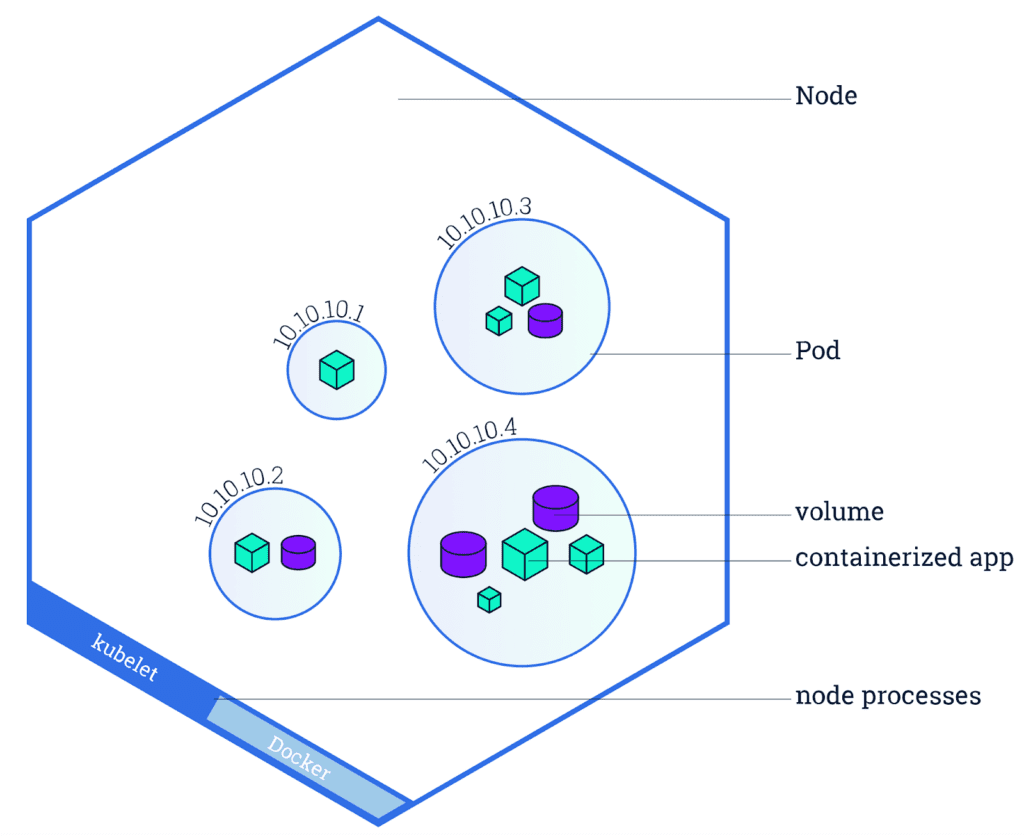Container Rightsizing: Balancing Kubernetes Performance & Financial Risk

Solutions Review’s Contributed Content Series is a collection of contributed articles written by thought leaders in enterprise technology. In this feature, Zesty‘s Principal Engineer Omer Hamerman offers commentary on container rightsizing and how to balance performance and financial risk.
In today’s digital landscape, Kubernetes has emerged as the preferred solution for organizations seeking to deploy containerized applications at scale. Its ability to dynamically manage and scale applications in a distributed environment has revolutionized the way businesses operate. However, like any technology, there are challenges that come with harnessing the power of Kubernetes, and one critical aspect that demands attention is container rightsizing.
Container rightsizing is the process of optimizing the size of containers running on Kubernetes to ensure efficient utilization of resources. This optimization involves fine-tuning CPU and memory allocations for each container while considering factors such as network bandwidth and storage. For businesses leveraging Kubernetes, container rightsizing plays a pivotal role in driving cost reduction, improving resource utilization, and enhancing overall application performance.
The significance of container rightsizing cannot be overstated. By carefully managing resource allocation, organizations can achieve substantial cost savings while maximizing the potential of their Kubernetes deployments. Moreover, efficient resource utilization translates into enhanced application performance, ensuring smooth operations and an exceptional user experience.
In this article, we will delve deeper into the world of container rightsizing in Kubernetes, exploring its benefits, challenges, and actionable strategies. We will examine the importance of visibility and configuration in cost optimization, discuss the risks associated with resource provisioning, and present best practices for achieving the delicate balance between performance and financial considerations. Additionally, we will explore how container rightsizing contributes to streamlining operations and delivering a seamless user experience in the Kubernetes ecosystem.
Container Rightsizing: Why So Important?
To properly understand the critical role of container rightsizing, it’s good to first have a basic understanding of how Kubernetes distributes pods and containers across nodes.
Kubernetes architecture involves a cluster of nodes, each running a set of pods with one or more containers, as illustrated below:

Figure 1: Kubernetes Node Overview
Kubernetes dynamically schedules pods to run on nodes based on resource availability and other factors, like affinity and anti-affinity rules. This enables Kubernetes to automatically scale applications up and down in line with changing demand, which is great. Still, there are various considerations companies have to factor in when using Kubernetes, such as cost.
The Cost of Kubernetes: Challenges
Despite the benefits of Kubernetes, cost optimization can be a significant issue for organizations using it. Several reasons for this exist, including the lack of built-in tools for cost visibility, the static configuration of workloads, and the tendency to overprovision resources at both the pod and node levels.
Visibility
By default, Kubernetes does not provide granular visibility into the expense associated with individual pods or nodes. This can make it difficult for developers to understand the cost implications of their applications and result in inefficient resource usage.
Configuration
Kubernetes workloads are configured using static CPU, memory, and storage configurations that are based on rough estimates of previous usage. This can result in overprovisioning resources to ensure performance and availability, leading to wasted resources and unnecessary spend.
Provisioning
More nodes than necessary are typically provisioned at the node level in Kubernetes to ensure application performance and availability. But this can lead to waste since each additional node increases the total cost.
There’s also the issue of provisioning the wrong instance type. For example, if you provision an instance type with higher CPU or memory than the workload requires, it will incur unnecessary costs.
Balancing Performance and Financial Risks in Kubernetes
Resource allocation in Kubernetes can be a complex and challenging task. The goal is to allocate resources in a way that optimizes app performance while minimizing total spend. However, there are several risks associated with both overprovisioning and underprovisioning resources.
Overprovisioning vs. Underprovisioning
Overprovisioning resources can lead to higher costs than necessary, as resources that no longer need to be used are still being paid for. It can also lead to resource conflict, which, in turn, can negatively impact app performance. Then there’s the false sense of security, as organizations may assume that their apps are always performing at their best when, in fact, they may be underutilizing resources.
In the case of underprovisioning, apps may experience performance issues, which can result in user dissatisfaction. Underprovisioning can also lead to operational risks since critical applications may lose access to the resources they need to function properly.
To mitigate these concerns, companies must adopt a balanced approach to resource allocation in Kubernetes. This involves accurately assessing each workload’s resource requirements and providing the appropriate amount of resources to meet those needs.
Rightsizing Containers in Kubernetes
The ideal solution for balancing performance and financial risks is rightsizing: determining the appropriate size of a container to optimize resource utilization and support app performance.
There are several Kubernetes-native solutions organizations can leverage to rightsize containers. Vertical Pod Autoscaler (VPA automatically adjusts container resource requests and limits based on historical usage patterns. Horizontal Pod Autoscaler (HPA) automatically alters the number of replicas of a container based on CPU utilization. And finally, Cluster Autoscaler can add or remove nodes based on demand.
When rightsizing containers in Kubernetes, there are several factors to consider. These include workload characteristics, scaling needs, and available resources. For example, you have to consider the CPU, memory, and storage requirements of each workload, as well as the potential impact of workload spikes on resource utilization. You also have to take into account the scaling needs of each workload and use this to determine the appropriate size for each container.
Best practices for container rightsizing in Kubernetes include:
- Conducting regular assessments of resource utilization
- Monitoring resource usage in real-time
- Leveraging Kubernetes-native solutions for better resource allocation
- Establishing clear policies and guidelines to ensure consistency and accuracy
Container rightsizing’s role in optimizing spend for the best possible performance brings another benefit: enhanced user experience.
Seamless UX in Kubernetes
A seamless user experience (UX) is critical for organizations implementing Kubernetes, as it can help streamline operations, reduce complexity, and improve overall productivity. However, Kubernetes is a challenging platform with a steep learning curve, and many struggle to achieve an intuitive UX.
Container rightsizing is key here. By optimizing resource allocation and supporting app performance, it ensures that critical applications are available and responsive when users need them. This improves overall productivity and reduces frustration and delays caused by slow or unresponsive applications.
Organizations looking to achieve container rightsizing for a seamless UX in Kubernetes are streamlining operations and continuous monitoring.
Streamlining Operations
Companies must reduce complexity and offer users proper guidance and support; the clear policies and guidelines mentioned above for container rightsizing, as well as training and support, come into play here.
Be sure to leverage Kubernetes-native solutions to automate and optimize resource allocation.
Continuous Monitoring
Making monitoring and analytics a priority is also a must to gain insight into resource utilization and to identify opportunities for improvement. By monitoring resource usage in real time and conducting regular assessments of resource utilization, organizations can spot potential bottlenecks and proactively address issues before they impact app performance.
Bottlenecks and potential improvements are critical inputs to rightsizing since they give insights into actual resource usage.
Conclusion
Kubernetes has undoubtedly established itself as a powerful platform for managing containerized applications, providing organizations with the flexibility and scalability they need. However, as applications become more complex and dynamic, the task of container rightsizing can become increasingly challenging. It is essential to recognize that container rightsizing is not a one-time activity but rather an ongoing commitment to continuous monitoring, assessment, and adjustment.
To alleviate the burden of manual resource allocation management, cloud optimization solutions emerge as invaluable allies. These solutions streamline the container rightsizing process, allowing organizations to focus on what they do best—delivering high-quality applications—without the constant worry of resource allocation. By leveraging proper tools, businesses can improve operational efficiency, reduce unnecessary costs, and maintain a competitive edge in the ever-changing application landscape.
Continuous monitoring and assessment of resource utilization are crucial for optimizing container rightsizing. Proactive identification of potential bottlenecks and performance issues enables organizations to make informed adjustments and maintain optimal resource allocation. By embracing the power of cloud optimization solutions and implementing best practices for container rightsizing, businesses can ensure that their Kubernetes deployments are cost-effective, resource-efficient, and capable of delivering seamless user experiences.
In summary, container rightsizing in Kubernetes is an ongoing process that demands diligence and adaptability. With the right tools and a commitment to continuous improvement, organizations can unlock the full potential of Kubernetes, achieve optimal resource utilization, and stay cost efficient at the same time.

















